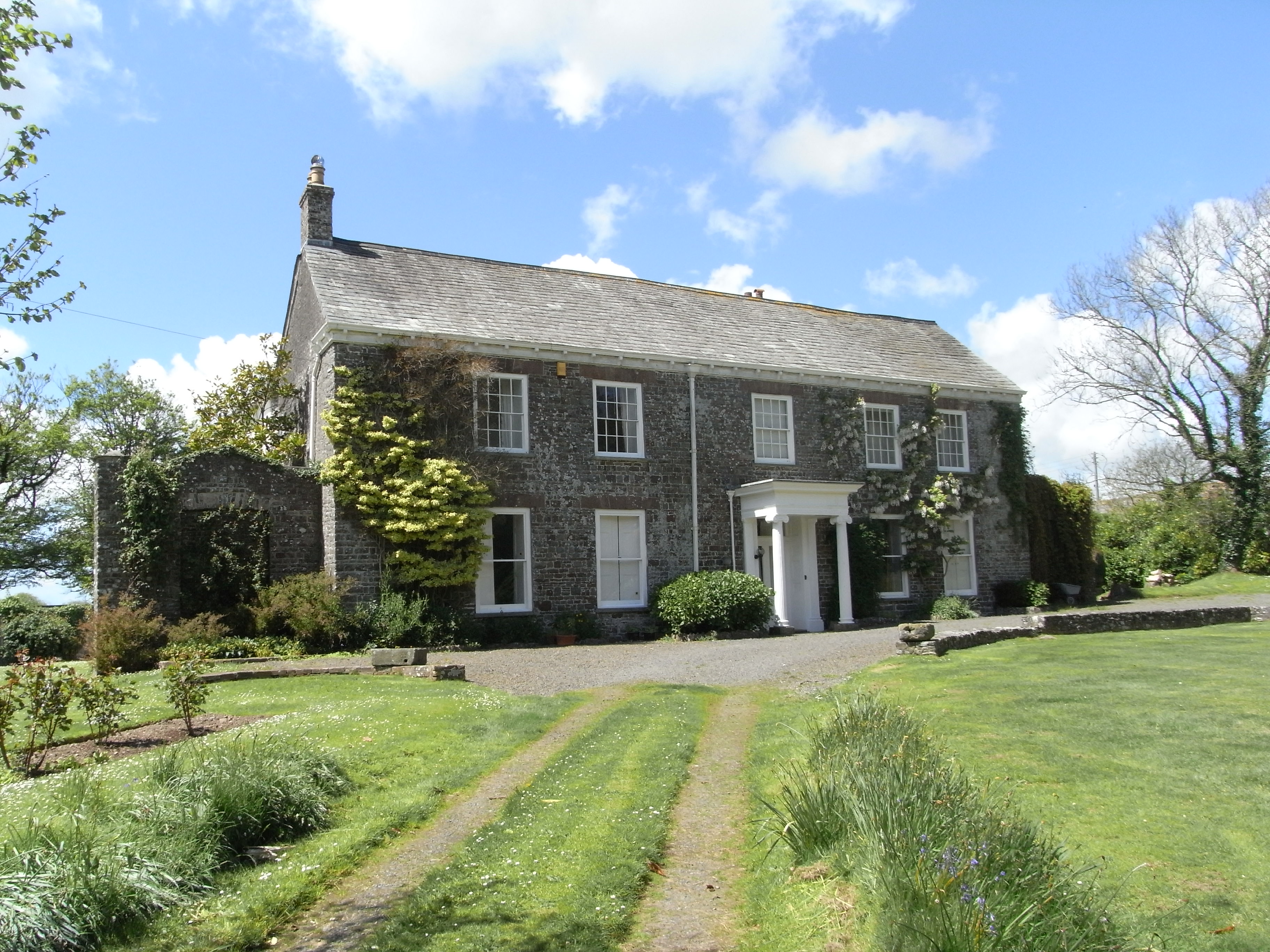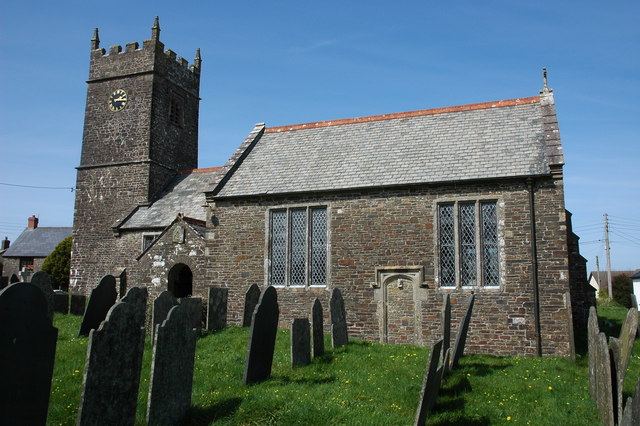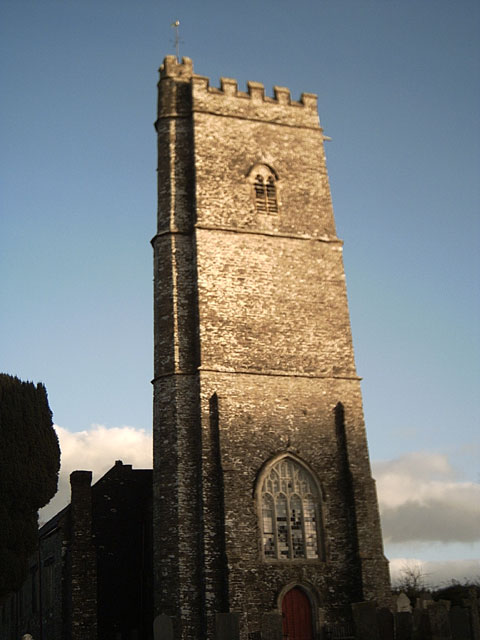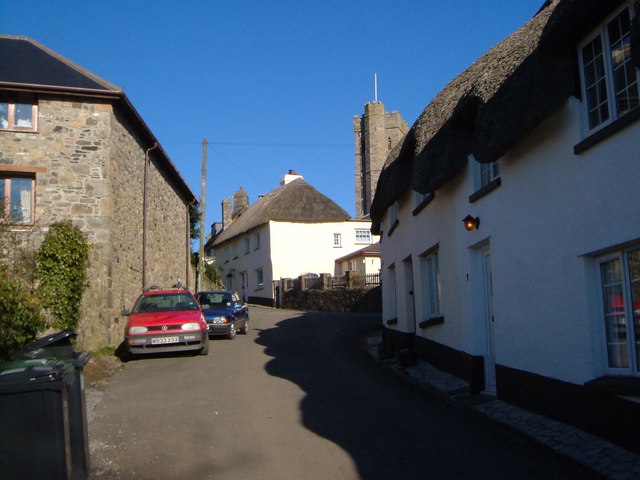|
Thuborough
Thuborough (alias ''Therborough, Theoburgh'', etc.) in the parish of Sutcombe, Devon, England, is an historic estate, formerly a seat of a branch of the Prideaux family, also seated at Orcharton, Modbury; Adeston, Holbeton; Soldon, Holsworthy; Netherton, Farway; Ashburton; Nutwell, Woodbury; Ford Abbey, Thorncombe, all in Devon and at Prideaux Place, Padstow and Prideaux Castle, Luxulyan, in Cornwall. The present mansion house, comprising "Thuborough House" and "Thuborough Barton", the north-east block, is a grade II listed building. Descent Brictwold The Anglo-Saxon holder of the estate of ''Teweberie'' (in the hundred of Black Torrington) immediately prior to the Norman Conquest of 1066 was ''Bristvold'', as recorded in the Domesday Book of 1086, the standardised spelling of which name is ''Brictwold''. A man named Brictwold, spelled variously as ''Bristvold, Brictvold, Bristvoldus, Bristoald, Brictwold'', etc., held 11 other estates in Devon as listed in the Domesday Book ... [...More Info...] [...Related Items...] OR: [Wikipedia] [Google] [Baidu] |
Thuborough Sutcombe Devon East Front
Thuborough (alias ''Therborough, Theoburgh'', etc.) in the parish of Sutcombe, Devon, England, is an historic estate, formerly a seat of a branch of the Prideaux family, also seated at Orcharton, Modbury; Adeston, Holbeton; Soldon, Holsworthy; Netherton, Farway; Ashburton; Nutwell, Woodbury; Ford Abbey, Thorncombe, all in Devon and at Prideaux Place, Padstow and Prideaux Castle, Luxulyan, in Cornwall. The present mansion house, comprising "Thuborough House" and "Thuborough Barton", the north-east block, is a grade II listed building. Descent Brictwold The Anglo-Saxon holder of the estate of ''Teweberie'' (in the hundred of Black Torrington) immediately prior to the Norman Conquest of 1066 was ''Bristvold'', as recorded in the Domesday Book of 1086, the standardised spelling of which name is ''Brictwold''. A man named Brictwold, spelled variously as ''Bristvold, Brictvold, Bristvoldus, Bristoald, Brictwold'', etc., held 11 other estates in Devon as listed in the Dom ... [...More Info...] [...Related Items...] OR: [Wikipedia] [Google] [Baidu] |
Soldon, Holsworthy
Soldon in the parish of Holsworthy Hamlets, Devon, England, is a historic estate, a seat of the Prideaux family. The manor house A manor house was historically the main residence of the lord of the manor. The house formed the administrative centre of a manor in the European feudal system; within its great hall were held the lord's manorial courts, communal meals with ... is a Listed building, grade II listed building dating from the mid-16th century with later alterations. It was sold in 2014 as an eight bedroomed house with an acre and a half of grounds for an asking price of £750,000. Descent de Soldon The earliest known holder of Soldon was the ''de Soldon'' family which took its surname from the estate. William Pole (antiquary), Pole (d.1635) records one of these owners as Stephan de Soldon, but without date. Prideaux Soldon was purchased by a junior branch of the Prideaux family, which also purchased the lordship of the manor of Holsworthy, Devon, Holsworthy from ... [...More Info...] [...Related Items...] OR: [Wikipedia] [Google] [Baidu] |
Sutcombe
Sutcombe is a village and civil parish in the local government district of Torridge, Devon, England. The parish, which lies about 5.5 miles north of the town of Holsworthy, is surrounded clockwise from the north by the parishes of West Putford, Abbots Bickington, Milton Damerel, Holsworthy Hamlets and Bradworthy. In 2001 its population was 299, compared to 351 in 1901. Church of St Andrew The parish church in the village is dedicated to Saint Andrew. Although it has a 12th-century south doorway it mostly dates from the late 15th and early 16th centuries, having some ornate 16th-century bench ends and late medieval floor-tiles from Barnstaple. It was restored by Bodley & Garner in 1876. War Memorial A Latin cross memorial on a four stepped plinth commemorating the residents of Sutcombe who were killed or missing in The Great War 1914- 1918 and World War 1939-1945. Plinth 4 Inscription "IN MEMORY OF THE MEN CONNECTED WITH THIS PARISH WHO GAVE THEIR LIVES IN THE GREAT ... [...More Info...] [...Related Items...] OR: [Wikipedia] [Google] [Baidu] |
Netherton, Farway
Netherton in the parish of Farway in Devon is an historic estate situated about 3 1/2 miles south-east of Honiton. The present mansion house known as Netherton Hall was built in 1607 in the Jacobean style, restored and rebuilt 1836-44, and is a Grade II listed building. Descent Canonsleigh Abbey The estate of Netherton was a possession of Canonsleigh Abbey, Devon.Risdon, p.35 Drake Following the Dissolution of the Monasteries it was sold by the crown to Sir Bernard Drake (c. 1537 – 1586) of Ash, Musbury, in Devon, who granted the grange to Mr Loman. Prideaux The Prideaux family is believed to be of Norman origin and to have first settled in England at some time after the Norman Conquest of 1066 at Prideaux Castle, near Fowey, in Cornwall. It abandoned that seat and moved to Devon, where it spread out in various branches, most notably at Orcharton, Modbury; Adeston, Holbeton; Thuborough, Sutcombe; Solden, Holsworthy; Netherton, Farway; Ashburton; Nutwell, Wood ... [...More Info...] [...Related Items...] OR: [Wikipedia] [Google] [Baidu] |
Bradninch
Bradninch is a small town and former manor in Devon, England, lying about south of Cullompton. Much of the surrounding farmland belongs to the Duchy of Cornwall. There is an electoral ward with the same name. At the 2011 Census the ward population was 2,041. In 2012, in research of 2,400 postcodes in England and Wales which took into account 60 separate factors of interest to young families, Bradninch was found to be the fifteenth most family friendly location in the country. The town is twinned with Landunvez in Brittany. Toponymy The place-name 'Bradninch' is first attested in the Domesday Book of 1086, where it appears as 'Bradenese'; the name is thought to mean 'broad oak' or 'broad ash'. Seventy-nine different spellings of the name of the town have been recorded. History Anglo-Saxon Bradninch dates back to before the 7th century and at some time there was almost certainly a Norman or Anglo-Saxon fortress on Castle Hill. There are no physical remains, and no known p ... [...More Info...] [...Related Items...] OR: [Wikipedia] [Google] [Baidu] |
West Buckland
West Buckland is a village and civil parish in Somerset, England, situated south west of Taunton in the Somerset West and Taunton district. The parish has a population of 1,189. History In 904, certain lands were the basis of a charter to Asser, Bishop of Sherborne, later confirmed in 908. It is thought that Buckland was perhaps known then as Bocland; the name for ‘chartered land’. Following this charter, or even earlier, the name West Buckland was established. But why West was added is unknown – perhaps to distinguish it from Buckland St Mary to the east. The parish of West Buckland was part of the Kingsbury Hundred. Buckland or Minchin Buckland Priory was founded as a house of St John the Baptist around 1166 for Augustinian canons. The buildings burned down in 1234. Gerbestone Manor was largely rebuilt in the late 16th century, although some fabric from the 13th century house remains. It is a Grade II* listed building. The house has been owned by a su ... [...More Info...] [...Related Items...] OR: [Wikipedia] [Google] [Baidu] |
Shirwell
Shirwell is a village, civil parish and former manor in the local government district of North Devon, in the county of Devon, England. It was also formerly the name of a hundred of Devon. The village lies about 3.5 miles north-east of the town of Barnstaple, to the east of the A39 road to Lynton. The parish is surrounded clockwise from the north by the parishes of East Down, Arlington, Loxhore, Bratton Fleming, Goodleigh, Barnstaple, West Pilton and Marwood. In 2001 its population was 333, little changed from the 1901 figure of 338. The parish church in the village is the church of St Peter which has 13th-century origins while the chancel is of 14th-century date. It underwent a Victorian restoration by the architect William White between 1873 and 1889. An effigy in the chancel is said to be of Blanche St. Leger (d.1483) and above this is a monument to Lady Anne Chichester (d. 1723). Other 18th-century monuments survive in the church. The aviator and sailor Sir Francis Ch ... [...More Info...] [...Related Items...] OR: [Wikipedia] [Google] [Baidu] |
Marwood, Devon
Marwood is a village in North Devon north of Barnstaple. The village contains of ornamental gardens open to the public, known as Marwood Hill Gardens. The gardens were developed by Jimmy Smart, who died in 2002. There is a tea-room. An electoral ward A ward is a local authority area, typically used for electoral purposes. In some countries, wards are usually named after neighbourhoods, thoroughfares, parishes, landmarks, geographical features and in some cases historical figures connected to t ... with the same name exists whose population at the 2011 census was 1,879. On an island in the middle lake at Marwood Hill Gardens is a sculpture of a mother and children by John Robinson, who also sculpted the font-cover in the 13th-century church at Marwood. A bronze sculpture of two swans arising from the lower lake was created by Jonathan Cox. References External links Villages in Devon {{Devon-geo-stub ... [...More Info...] [...Related Items...] OR: [Wikipedia] [Google] [Baidu] |
Ilsington
Ilsington is a village and civil parish situated on the eastern edge of Dartmoor, Devon, England. It is one of the largest parishes in the county, and includes the villages of Ilsington, Haytor Vale, Liverton and South Knighton. The parish is surrounded, clockwise from the north, by the parishes of Bovey Tracey, Teigngrace (a short border only), Newton Abbot, Ogwell (another short border), Bickington, Ashburton, Widecombe-in-the-Moor and Manaton. In 2001 the population of the parish was 2,444, greatly increased from the 886 residents recorded in 1901. The parish is represented in parliament by Mel Stride, as part of the Central Devon constituency. History The village is believed to be an ancient settlement – probably existing 200 to 300 years before the Norman Conquest. It is mentioned in the Domesday Book of 1086 as Ilestintona, and there is known to have been a church there since at least the 11th century. St. Michael's parish church, as seen today, dates back t ... [...More Info...] [...Related Items...] OR: [Wikipedia] [Google] [Baidu] |






